Oscillating Multi Tool Buyers Guide
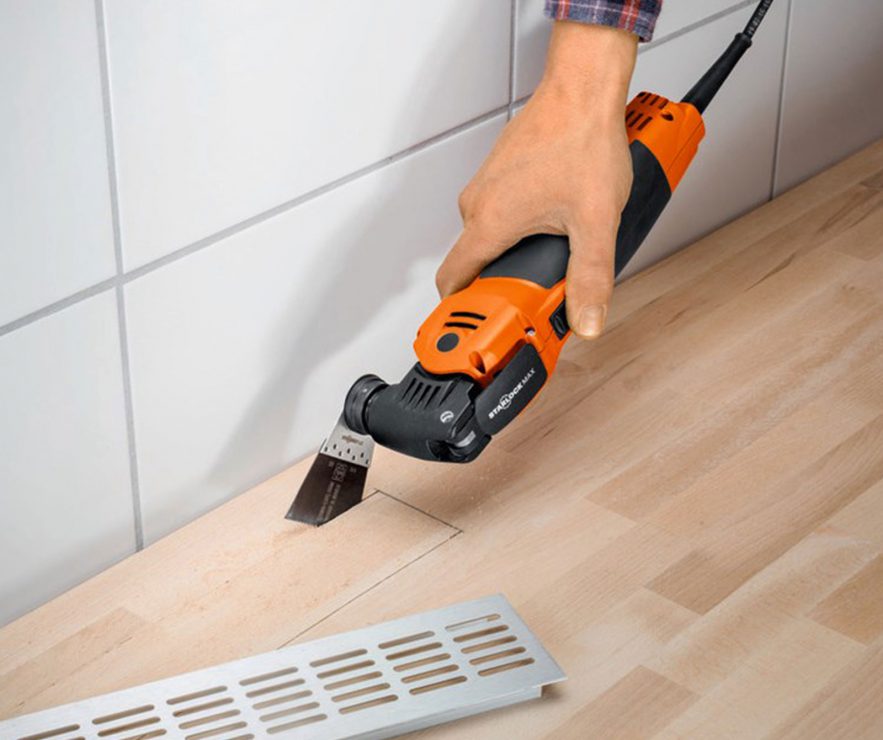
The Tooled-Up Buyers Guide to Oscillating Multi Tools
In days gone by, an oscillating multi tool was a fairly specialist piece of equipment which would have been unfamiliar to most – and while they are much more ubiquitous today, there is still a lot of confusion around exactly how they work, and – crucially – what accessories they can be used with. To help you get the most out of your oscillating multi tool, and to guide you through what to look out for when choosing one, we’ve compiled this buying guide which will go through some of the key points.
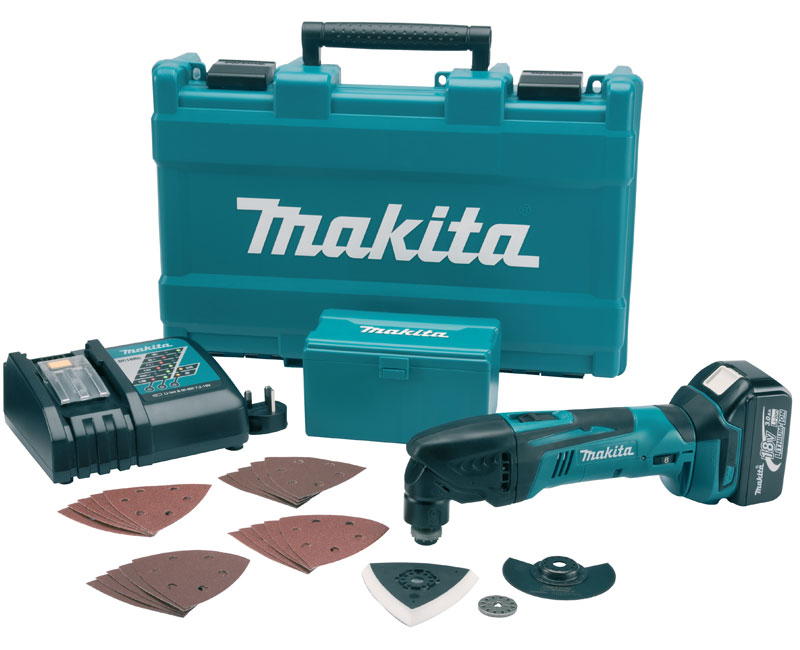
Where did the Oscillating Multi Tool Come From?
The oscillating multi tool was developed by the German company Fein, who patented the technology behind it in the 1960s. Its predecessor was a medical tool designed for cutting through plaster casts, but it was soon realised that the technology had lots of potential for trade professionals like carpenters, plumbers and electricians too. With the appropriate accessory installed, the same tool could be used for applications such as cutting, scraping, sanding and grinding, and Fein introduced the Multimaster series of multi tools for the Trade market – a line which continues to this day.

The original patent didn’t expire until 2008, and this meant that Fein, a relatively small German manufacturer of high end tools for the professional market, were the only people making oscillating multi tools for 50 years. But other manufacturers were keen to get in on the act, and once the patent had expired they were able to start bringing out their own versions too. This led to a mini-explosion of multi tools at various price points – something that eventually saw the technology crossing over into the DIY market in a much bigger way.
How do Oscillating Multi Tools Work?
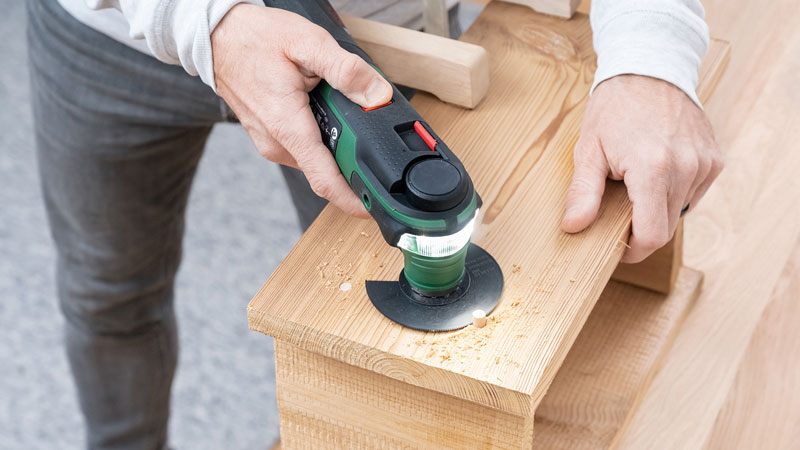
Oscillating multi tools are often categorised alongside rotary multi tools, and although they share some similarities these tools work in completely different ways – additionally they both have a different accessory system which means they can’t use the same accessories. The rotary tool takes shanked accessories, like a drill or a die grinder, and operates in much the same way, but the oscillating tool has a fairly unique action amongst power tools and behaves more like a high powered electric hair clipper. The oscillating action essentially means the accessory vibrates with enough force to cut, sand, or scrape the material you’re working on, and the accessories can typically be clamped into place at a variety of different angles, giving you lots of options for confined or awkward workspaces.
Accessory Mounting Systems
This brings us on to probably the most confusing aspect of these tools – there are a variety of different mounting options, and unfortunately they aren’t necessarily all compatible with each other. Before buying an oscillating multi tool, it’s a good idea to try and find out whether accessories are readily available for it – this is especially true for many of the cheaper options on the market which may seem like a good deal at first but can prove to be impossible to get replacement parts for. The advantage of the bigger, well known brands is that although you may pay a bit more initially, you’ll probably have access to a wider selection of aftermarket accessories which will enable you to get much more use out of the tool.
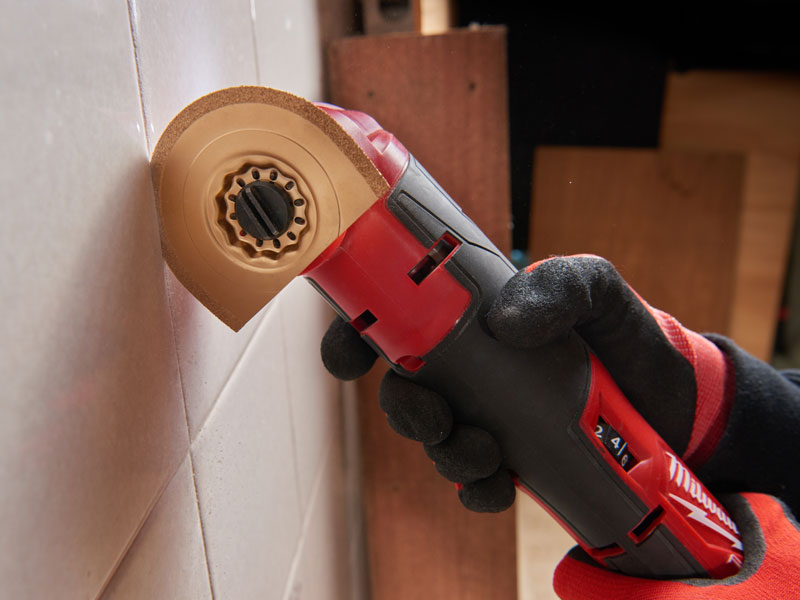
At the professional level, the closest thing to a standard is probably the Starlock system, which was developed by Bosch and Fein, but is also used by brands such as Milwaukee and Makita. The standard Starlock accessories will work with any Starlock-compatible multi tool, but there are also two higher grades – Starlock Plus and Max, which will only work with machines specifically designed for them (although they will also accept the standard Starlock accessories too).
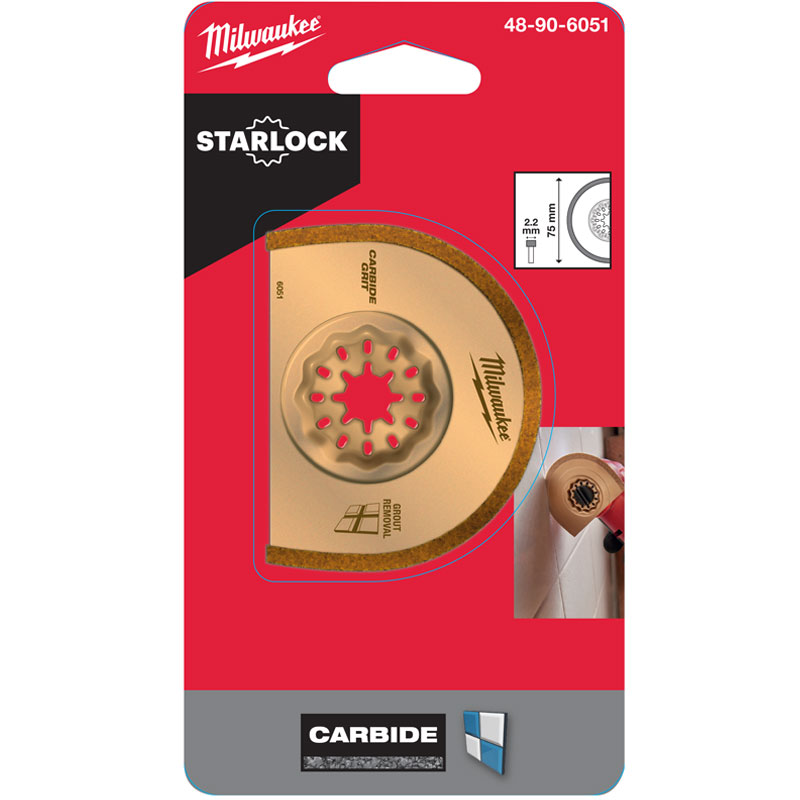
There are plenty of tools that don’t use the Starlock system though, and this is where things get a bit more complicated. Although it’s not a term you hear very often, many tools (especially older ones) were built around the OIS interface, which was also designed by Bosch. You’ll find that most of the major manufacturers, if they don’t use Starlock, will have an accessory system which is at least based around this design. This doesn’t guarantee they’ll all work with each other, but luckily there are also a variety of adaptors on the market which will generally enable you to fit accessories from other manufacturers without too much trouble.
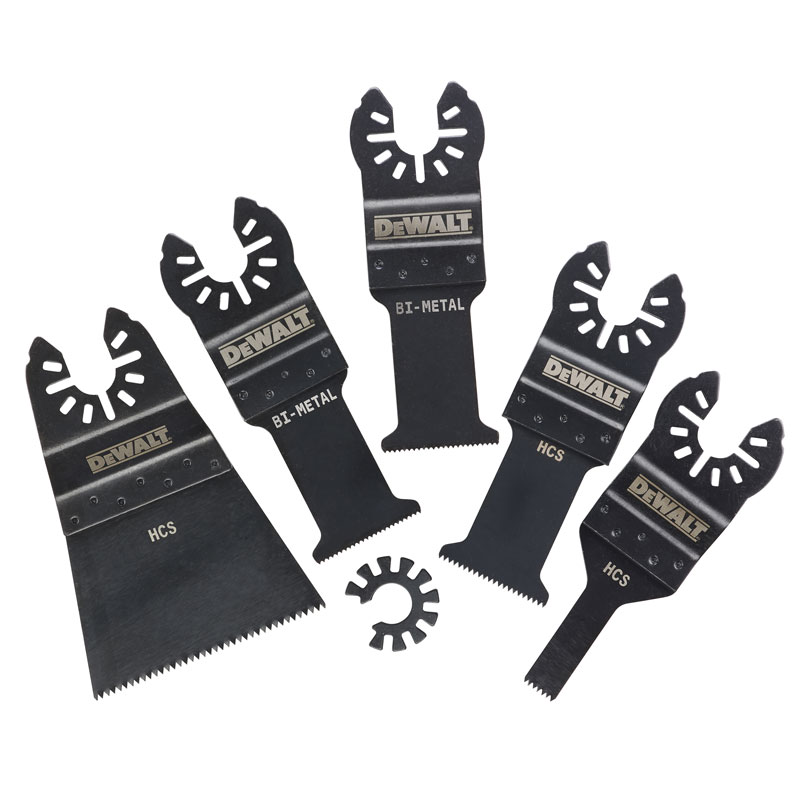
What Can I Do with an Oscillating Multi Tool?
Oscillating multi tools excel at plunge cuts, and this is probably the function most commonly associated with them. In fact many people assume you can do everything an oscillating multi tool does with a handheld wood chisel, but the reality is they are much more versatile than that. For one thing, being electrically powered means you don’t have to hit them with a hammer, an advantage that means you can easily use them in confined spaces for example. You can also cut through metal objects like nails as well as more delicate materials like plasterboard, without damaging the tool or the work surface.
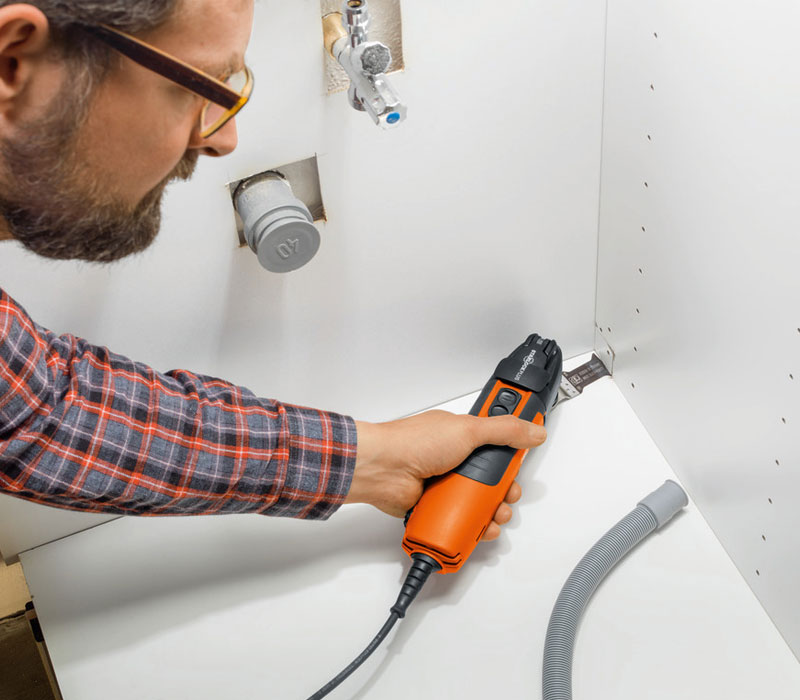
Aside from plunge cutting however, there is also much more you can use an oscillating multi tool for – for example, removing tile grout, undercutting door jambs, flush cutting extruding pipes, screws or nails, scraping off old residues and sanding wood are just some of the applications people regularly use them for. They are especially useful for renovation projects, for example when laying new laminate flooring or re-tiling a bathroom, and you’ll find they can greatly speed up jobs that would otherwise require a lot of physical labour, or a lot of head-scratching trying to work out the best way to go about them.
DIY or Professional?
As with most power tools, you’ll find that oscillating multi tools will generally come with a warranty that covers domestic (DIY) use only, or a warranty which is also valid for professional use. In many cases, the warranty period may be the same; however DIY-grade power tools are only designed for intermittent use around the home and garden, while professional-grade power tools are designed to withstand daily use in working environments and are therefore made with more robust components. As you’d expect, this means the DIY versions are usually cheaper, but bear in mind the warranty may be void if you purchase one for use in your day job or for other commercial use. DIY-grade oscillating multi tool brands we stock here at Tooled-Up include Black & Decker, Bosch Home & Garden and Einhell, while the professional grade options include Bosch Professional, DeWalt, Fein, Makita and Milwaukee.
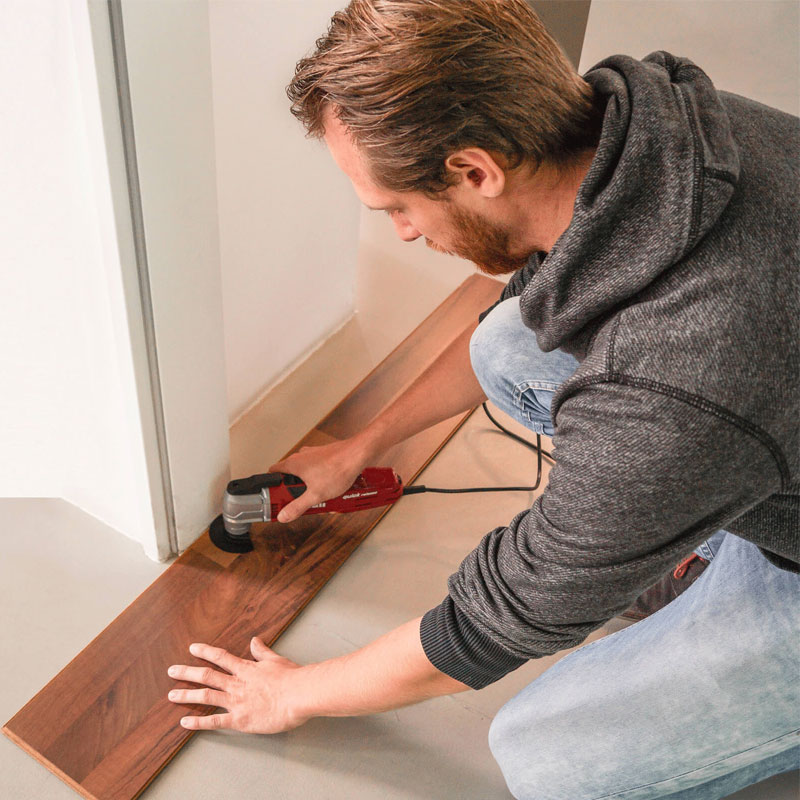
Corded or Cordless?
The vast majority of power tools today can be found in corded or cordless variants, and oscillating tools are no exception. There are pros and cons to each as while battery powered tools give you much more freedom, especially when working outside or in construction and jobsite environments, corded tools will keep running for as long they’re plugged in – a real advantage for bigger jobs which might require several battery changes.
If you’ve decided you definitely don’t want to be dealing with a mass of tangled power leads and extension cables, then it’s worth checking if there are any cordless oscillating tools which are compatible with batteries you already own – most cordless platforms contain at least one of these tools in their catalogue, and if you can buy one without battery and charger you’ll save a bit of money too.
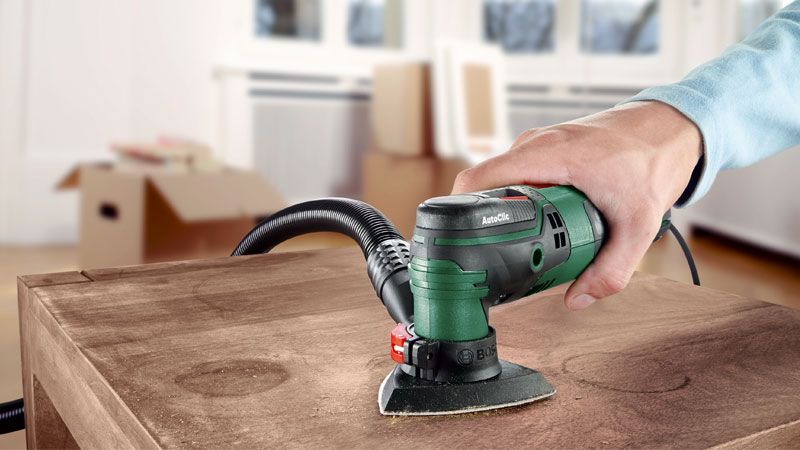
Recomended PPE
As when using any power tool, it is important to be aware of any potential health and safety issues before you switch it on. Although they may look pretty innocuous compared to things like circular saws, oscillating multi tools can still be hazardous. Firstly, they can be surprisingly loud, so ear protection should be added to your PPE checklist as well as eye protection. You may also want to wear suitable respiratory protection if you’re doing work that is likely to generate dust, and take care to ascertain whether there are any health risks before working on certain materials, especially in older properties which can contain harmful substances like lead-based paint and asbestos fibres.
Categories mentioned in this article:
Oscillating Multi Tool Accessories
